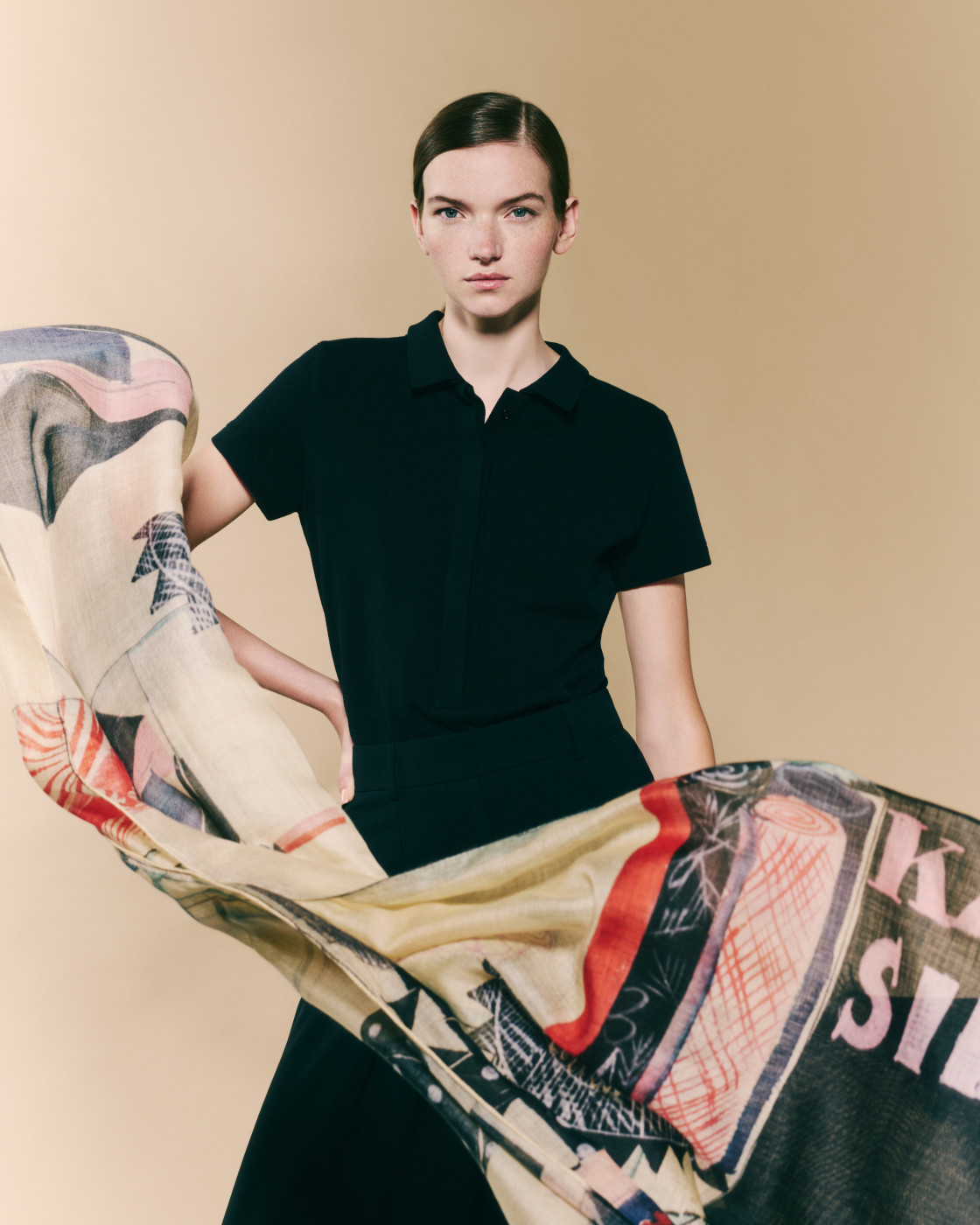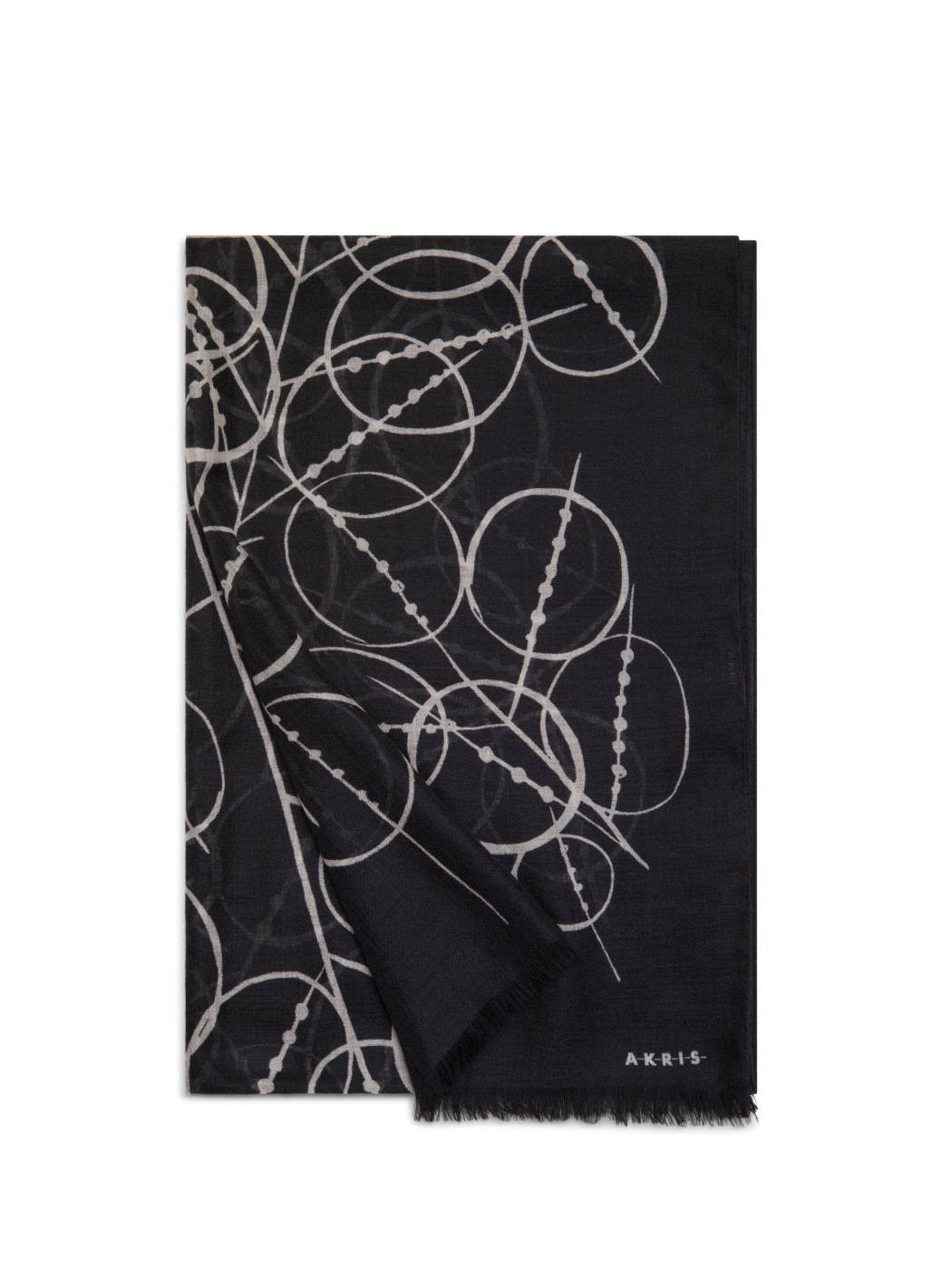
Akris Collector’s Scarves Inspired by Felice Rix-Ueno
When Akris’ creative director Albert Kiemler visited Vienna’s Museum of Applied Arts in 2023 in the company of its new director Lilli Hollein, he immediately fell in love with the delicate but powerful textile designs by Felice “Lizzie” Rix-Ueno (1893-1967) that he saw in the archives. Kiemler instantly knew that he had to dedicate a special collection to the renowned Wiener Werkstätte artist and a pivotal figure in Viennese Modernism, and that’s how his spring-summer 2024 collection was born. For fall-winter, he decided to continue his homage to the iconic artist, dedicating to her a special capsule collection of ten collective silk scarves on the frontière of fashion and art.

“I was amazed by her passion to create a visual language of her own – to become one of the most remarkable textile and craft artists of the 20th century,” explained Kiemler in an interview with Wallpaper magazine. “Strong colour contrasts let her art shine to this very day, most fabulously in her flowers and birds. Her whimsical ideas made the universal personal. Viennese modernism was defined as a search for reduction and rationality. And then Lizzi came along, bringing ornament, vibrancy, colour and curves. For her, “fantasie” meant demonstrating imagination to achieve originality”.
Inspired by Felice Rix-Ueno’s iconic floral designs, timeless, elegant and recognisable from first sight, the scarves are embellished with her signature eye-catching motifs - Cherries, Denim Blossom, and Poppies - floating, moving and hovering on the fabric. The Austrian artist used to live in Vienna, before finding a new home in Kyoto after marrying Japanese architect Isaburō Ueno in 1925, that’s why her poetic designs always combined both the Mitteleuropean graphic motifs of the early 20th century and traditional floral, bird and fruit patterns from Japan. Large-sized, limited edition scarves are available in 100% cashmere, but also in a cotton-silk blend.
Felice Rix-Ueno joins a long list of artists whose works inspired Akris to develop collectable pieces, including Carmen Herrera, Thomas Ruff, Imi Knoebel, Geta Brătescu, Alexander Girard, Sou Fujimoto, and Vivian Maier. Behind this wearable art is a real know-how. In the early 2000s, Albert Kriemler began to explore the fascinating scope of new digital photo techniques for printed fabrics in Akris’ atelier in St Gallen, Switzerland. That’s how he found an inkjet technology (here, everything is possible, photographs can even be digitally printed on sequin fabrics) to translate the allure of photographs, art and architecture motifs into refined collectable pieces.
Courtesy: Akris
Text: Lidia Ageeva























